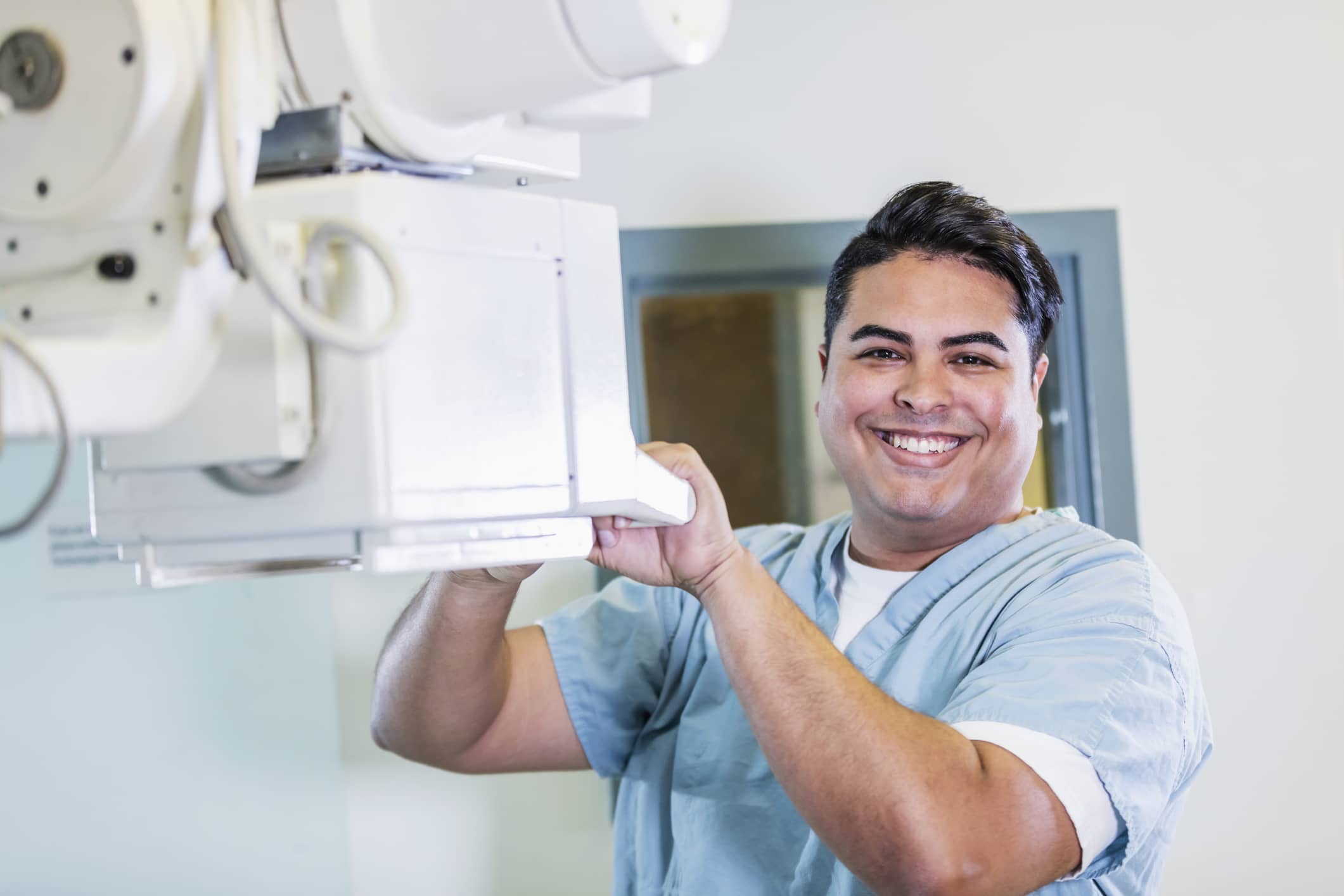
Integrating Technology into Physical Therapy
In the realm of physical therapy, advancements in technology have opened new doors for patient care and treatment efficacy. For healthcare professionals, physical therapists, and travel physician therapists, integrating modern tools into treatment plans is no longer optional—it’s essential.
This guide aims to explore how technology like ultrasound, electrical stimulation, and specialized exercise equipment can enhance physical therapy outcomes. By the end, you'll have actionable insights to revolutionize your practice and elevate patient care.
Why Technology Matters in Physical Therapy
Technology has transformed almost every sector, and physical therapy is no exception. With the demands on healthcare professionals increasing, leveraging technological tools can significantly improve treatment efficiency and patient outcomes. Whether you're in a clinic or on the road engaged in travel physical therapy jobs, these advancements offer practical solutions to everyday challenges.
The Benefits of Incorporating Technology
The incorporation of technology in physical therapy provides numerous benefits:
- Improved Accuracy: Tools like ultrasound offer precise imaging, helping in diagnosing and treating conditions with greater accuracy.
- Enhanced Efficiency: Electrical stimulation devices can expedite muscle recovery and pain management.
- Better Patient Engagement: Advanced exercise equipment can make therapy sessions more interactive and engaging for patients.’
Related: Technology Innovations for Traveling Therapists
Key Technologies in Physical Therapy
Ultrasound in Physical Therapy: Ultrasound is commonly associated with imaging, but its therapeutic uses are vast. Here's how you can incorporate it into your practice:
- Diagnostic Imaging: Ultrasound helps in visualizing internal structures, aiding in accurate diagnosis and treatment planning.
- Therapeutic Applications: Therapeutic ultrasound can promote tissue healing and reduce inflammation by increasing blood flow to targeted areas.
- Guided Injections: For more invasive treatments, ultrasound can guide needle placement, ensuring precision and improving outcomes.
Electrical Stimulation: Electrical stimulation (E-stim) is another game changer in physical therapy. Here’s how it works and why it’s beneficial:
- Muscle Activation: E-stim can be used to stimulate muscle contractions, helping in muscle re-education and strength training.
- Pain Management: TENS (Transcutaneous Electrical Nerve Stimulation) units are effective for managing chronic pain conditions by interrupting pain signals to the brain.
- Rehabilitation: Post-surgery, electrical stimulation can accelerate recovery by enhancing muscle function and reducing atrophy.
Exercise Equipment: Modern exercise equipment is designed to be adaptable and versatile, catering to various patient needs:
- Resistance Bands: These are excellent for progressive resistance training, suitable for a wide range of exercises.
- Stability Balls: Great for core strengthening and improving balance, stability balls can be incorporated into multiple exercise routines.
- Treadmills with Gait Analysis: These specialized treadmills help in analyzing a patient’s gait, allowing for tailored interventions to improve walking patterns.
Integrating Technology into Your Practice
Assessing Patient Needs: Before integrating any technology, it’s crucial to assess the specific needs of your patients. Consider factors like their condition, treatment goals, and overall health. Customizing your approach ensures that each patient gets the most out of the technology used.
Training and Education: To make the most of these tools, continuous training and education for both therapists and patients are essential. Stay updated with the latest advancements and consider certifications that specialize in physical therapy technology.
Creating a Tech-Enhanced Treatment Plan: Once you have the necessary tools and training, start incorporating them into your treatment plans. Begin with a pilot phase to gauge effectiveness and gather patient feedback. Adjust and scale your approach based on these insights to ensure optimal results.
Overcoming Technological Challenges
Addressing Technological Barriers: Despite the benefits, integrating technology can come with challenges. Common barriers include cost, learning curves, and resistance to change. To overcome these, consider phased implementation and invest in user-friendly tools that offer comprehensive training support.
Ensuring Accessibility: It's crucial to ensure that technological advancements are accessible to all patients, including those in underserved areas. Mobile units and portable devices can bridge this gap, making advanced care attainable in travel physical therapy settings.
Compliance and Safety: Always prioritize patient safety and compliance with industry standards. Regularly maintain and calibrate equipment, and stay informed about regulations governing the use of medical technology in physical therapy.
Future Trends in Physical Therapy Technology
Artificial Intelligence and Machine Learning
AI and machine learning are set to revolutionize physical therapy by offering data-driven insights for personalized treatment plans. These technologies can analyze patient data to recommend optimal exercises and adjust protocols in real-time.
Virtual Reality
VR is emerging as a powerful tool for rehabilitation, offering immersive environments that make therapy sessions more engaging. From balance training to cognitive rehabilitation, the applications are vast and promising.
Telehealth and Remote Monitoring
Telehealth platforms and wearable devices enable remote monitoring and virtual consultations, making physical therapy more accessible. This is particularly beneficial for travel physical therapy jobs, where therapists can maintain continuity of care across different locations.

Elevate Your Physical Therapy Practice with Advanced Technology
Technology is revolutionizing physical therapy, providing tools that enhance precision, efficiency, and patient engagement. By incorporating innovations like ultrasound, electrical stimulation, and advanced exercise equipment, healthcare professionals can deliver superior care and achieve improved outcomes. For those in travel physical therapy, these technologies offer portable, adaptable solutions that ensure high-quality care is available anywhere.
To further enhance your expertise, consider enrolling in specialized courses or consulting with experts in physical therapy technology. Your patients—and your practice—deserve the highest standard of care. AMN Healthcare is here to help you find the perfect job to match your skills and advance your career.
Ready to transform your PT career? Discover how AMN Healthcare can support you on the road to success!
Latest News
Part 2 - The Other Side of the Bed: A Journey of Resilience and Advocacy with Sarah Boes
Hear Sarah Boes’ journey of resilience, mental health, and nursing innovation. This episode of Nursing Uncharted will inspire nurses and students.
Operating Room (OR) Travel Nursing Jobs: Requirements, Pay and Best Locations
Explore OR travel nursing jobs. Learn about requirements,
Operating Room (OR) Travel Nurse Salary: How Much Can You Make in 2025?
Discover the earning potential and perks of operating room travel nurse jobs in 2025. Learn how to maximize your salary and find top-paying contracts.
Top Medical Surgical Travel Nursing Trends You Need to Know
Discover the latest trends in Med-Surg travel nursing, from high-demand locations to innovative care technologies. Maximize your career opportunities today!
How to Balance Work & Travel as a Med-Surg Travel Nurse
Learn how med-surg travel nurses can balance demanding work schedules with travel adventures. Find tips for time management, self-care, and choosing assignments.
Best Cities for Telemetry Travel Nursing Jobs
Discover the best cities for telemetry travel nursing jobs in 2025, exploring opportunities in Austin, San Diego, Atlanta, and more. Get insights and career tips today!
ICU Travel Nurse Jobs: Certifications That Boost Your Pay
Want better pay and opportunities as a travel nurse? Boost your skills with these certifications tailored for ICU travel nurse jobs. Learn more today!
Essential Skills Every Telemetry Travel Nurse Needs
Master these 7 telemetry travel nurse skills to thrive in











